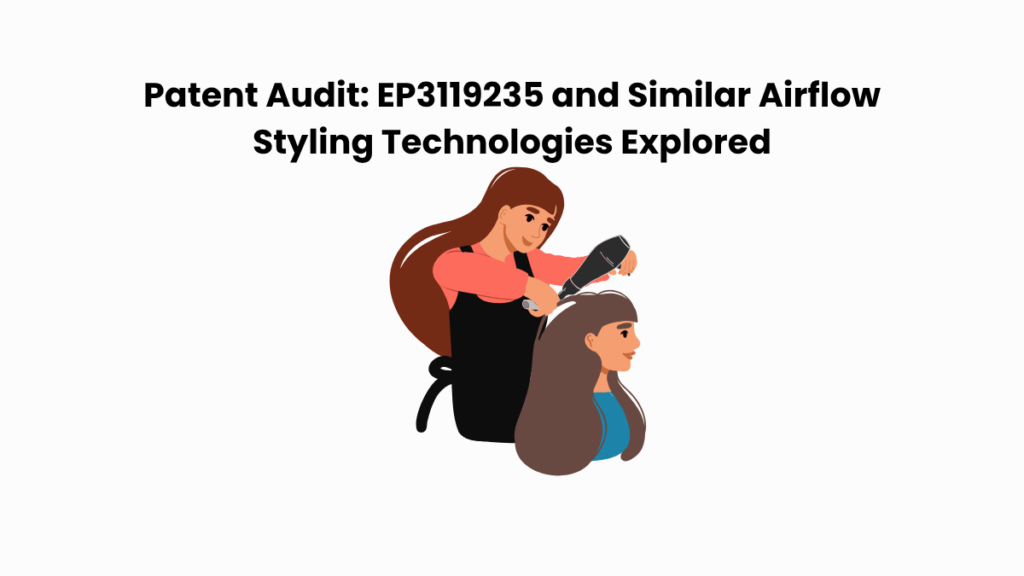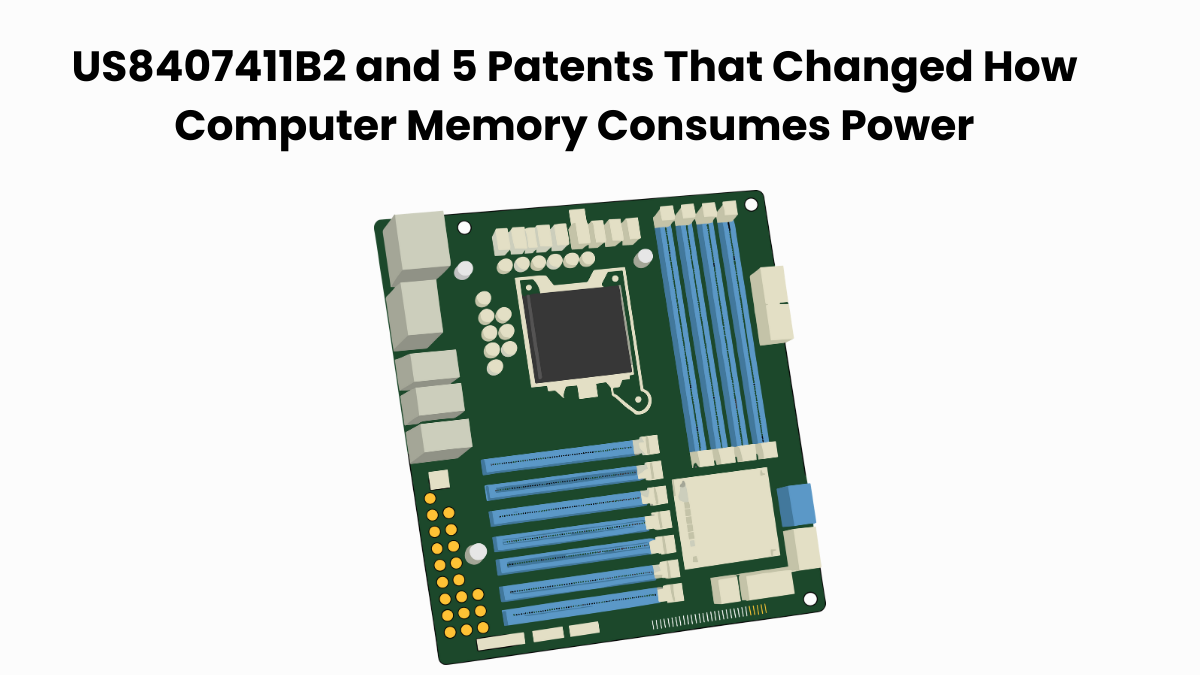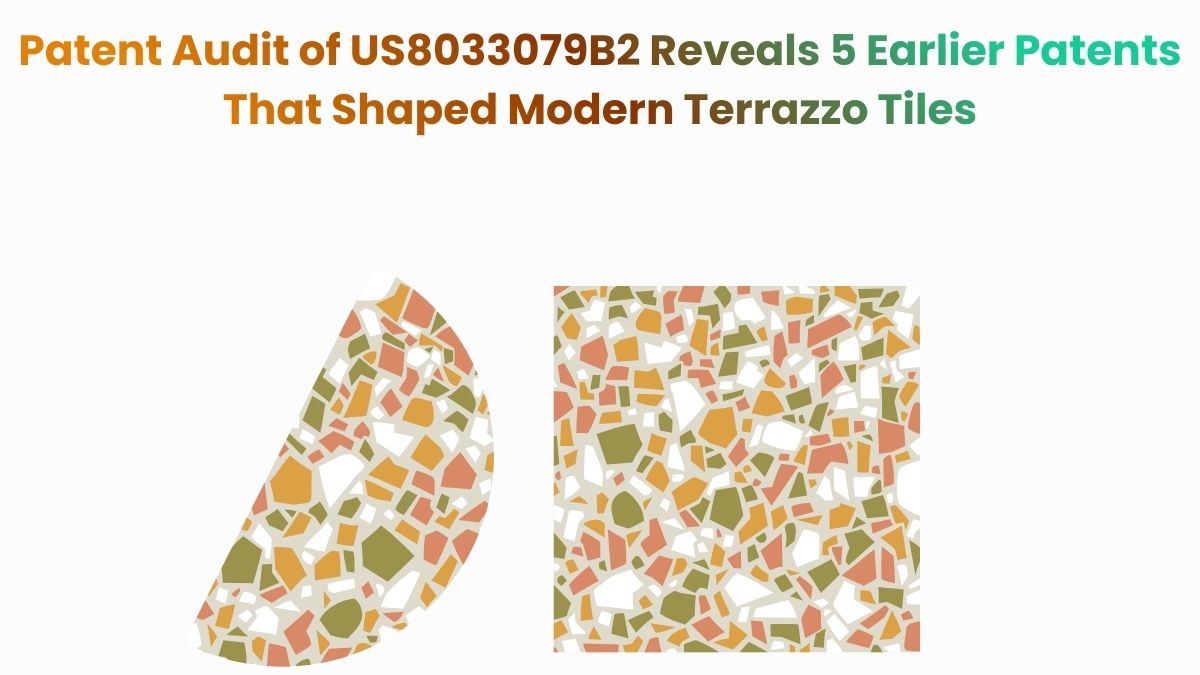When airflow design meets styling performance, even a simple attachment can transform an entire appliance category.
EP3119235B1, assigned to Dyson Technology Limited, is a European patent currently subject to provisional measures proceedings involving Dreame International and Teqphone GmbH. While legal specifics are not our primary focus, the technology warrants a deeper examination.
This patent discloses an attachment for handheld styling devices, such as hot brushes. It features a distinctive fluid outlet formed by overlapping wall sections, creating a precisely angled slot. This design directs airflow around the exterior surface, enhancing styling results, reducing noise, and improving user experience.
To explore related innovations, we use the Global Patent Search (GPS) platform. GPS enables feature-level comparisons across patents, identifying structural overlaps and technological similarities with unmatched efficiency.
If you’re involved in product design, IP research, or consumer device innovation, this GPS-powered analysis offers a focused view into the inventive framework behind EP3119235B1.
Understanding Patent EP3119235B1
EP3119235B1 focuses on an attachment for handheld appliances, such as hot styling brushes. It introduces a fluid outlet design that improves airflow control, hair wrapping, and overall styling performance.
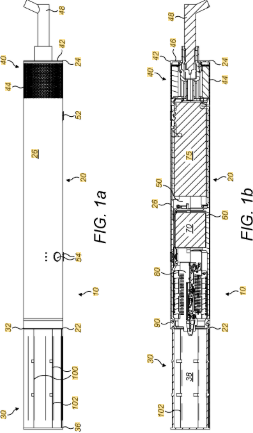
Source: Google Patents
Its Four Key Features Are
#1. Overlapping slot outlet: A slot formed by overlapping wall ends directs airflow along the attachment’s outer surface.
#2. Tangential airflow design: Air exits tangentially, creating a smooth wrap-around motion for hair.
#3. Multi-plate construction: The tubular wall is built from at least two longitudinally arranged plates.
#4. Integrated spacer element: A spacer maintains consistent slot thickness to optimize flow and reduce noise.
This patent represents a significant advancement in airflow-based styling attachments. Its design enhances user experience through controlled fluid dynamics and noise-reducing elements. Just as earbuds evolved to manage compact acoustic airflow, personal styling devices like EP3119235B1 show how airflow channels can transform functionality in handheld form factors.
Similar Patents As EP3119235B1
To explore the innovation landscape surrounding EP3119235B1, we ran the patent through the Global Patent Search tool. Below is a quick glimpse of the GPS tool in action:
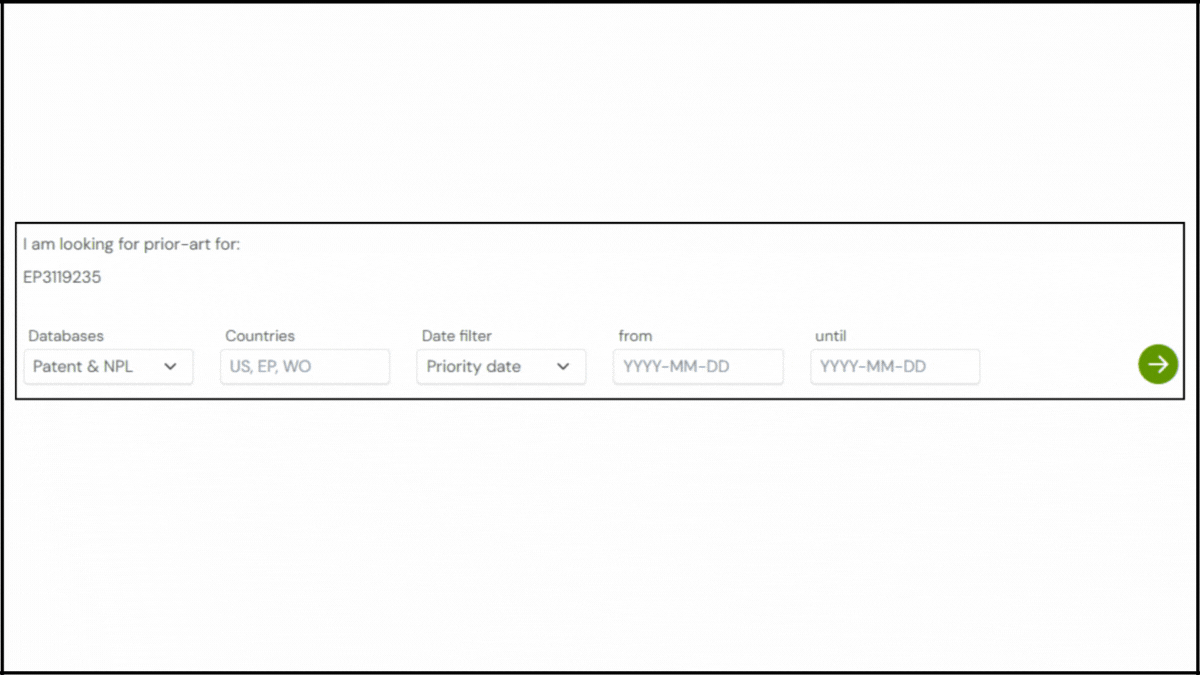
Source: Global Patent Search
This analysis surfaced a list of related patents that share technical similarities in airflow channeling, styling performance optimization, and attachment design. Below, we highlight four such references that reflect comparable ideas in hot air appliance construction. These examples offer insight into how similar challenges have been addressed across personal care technologies.
#1. CN109497683A
This Chinese patent, CN109497683A, published in 2019, discloses a hand-held hair care appliance with a dual-wall airflow system. The invention uses curved internal walls, annular outlets, and interlocking duct sections to streamline air output and improve flow efficiency across the styling surface.
Below, we have added snapshots from the GPS tool highlighting the relevant snippets from the specification for the similar patents.
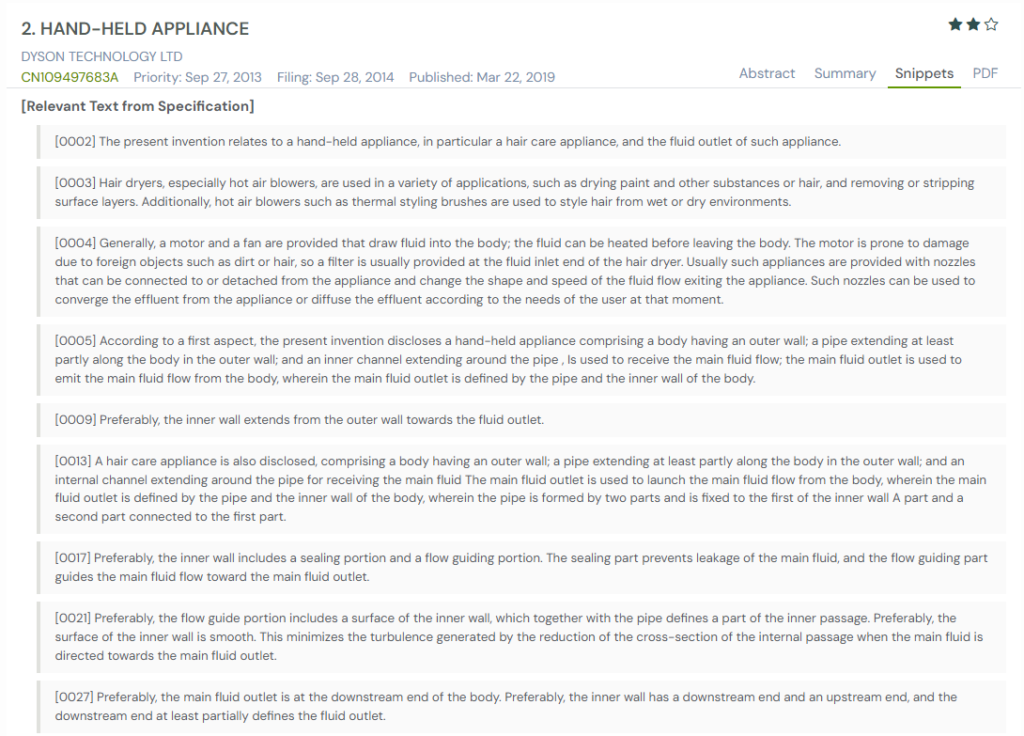
What This Patent Introduces To The Landscape
1. Annular fluid outlet geometry
The design forms a ring-like outlet between inner and outer structures, enabling smooth, symmetrical airflow around the appliance head.
2. Lip-and-recess duct construction
Interlocking pipe segments with tabs and slots help ensure a tight fit and alignment throughout the fluid path.
3. Curved internal flow guides
Internal walls are shaped with a smooth curve to minimize turbulence and direct air with greater control.
4. Tapered body structure for entrainment
A narrowing outer casing boosts airflow volume by drawing in surrounding ambient air.
5. Multi-directional airflow path
Air flows through a non-linear internal route, passing orthogonally from the handle to the styling head.
How It Connects To EP3119235B1
- Both designs rely on overlapping structures to shape and direct airflow through controlled slots.
- Each patent emphasizes tangential or annular airflow along the outer surface for hair wrapping and styling.
- Both inventions address air smoothing and entrainment through geometric control of the outlet design.
Why This Matters
This reference confirms that modular construction and guided airflow are core themes in modern styling tools. It reinforces how EP3119235B1 fits into a broader trend of structural airflow optimization to elevate performance, precision, and user experience.
#2. CA2448013C
This Canadian patent, CA2448013C, published in 2004, discloses an attachment for handheld dryers that improves airflow efficiency without modifying internal motor or impeller settings. The invention focuses on shaping and mixing airflow through a shell structure that mounts externally to the dryer barrel, increasing volumetric and velocity output via a coextensive air passage and ambient air inlets.
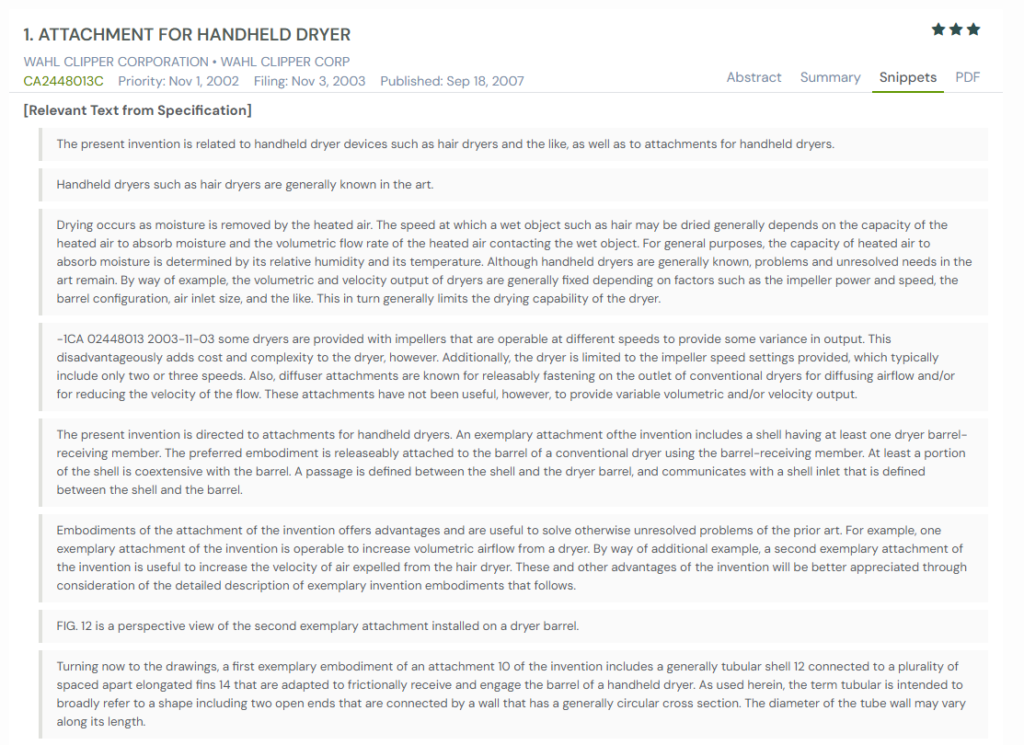
What This Patent Introduces To The Landscape
1. Shell-based airflow amplification
A tubular shell structure forms an air passage outside the dryer barrel, allowing the device to draw in ambient air and mix it with the internal flow.
2. Dual-channel flow path
Upper and lower air passages converge at a mixing chamber where ambient and internal airflows combine to increase drying efficiency.
3. Variable output via geometric tapering
The narrowing shell and nozzle geometry are designed to increase airflow velocity and allow tuning of volumetric output without altering impeller speed.
4. Interchangeable attachment configurations
Finned sections and adjustable nozzles allow compatibility with various barrel designs and user needs, enabling flexible airflow shaping.
5. Mixing region for entrainment
A defined mixing zone enhances volumetric flow by entraining ambient air, boosting overall drying power without extra energy consumption.
How It Connects To EP3119235B1
- Both inventions use external structural elements to shape and enhance airflow around the outlet zone.
- Each design leverages aerodynamic features to control volumetric output, directionality, and flow smoothness.
- Both prioritize passive methods, like geometry-driven flow redirection, for improving performance without altering internal components.
Why This Matters
This reference supports EP3119235’s approach of using outer-surface geometries and modular designs to control airflow output. It highlights how inventive air outlet shaping, whether for styling or drying, can transform basic appliances into precision tools by optimizing volumetric and directional airflow using structural means.
#3. JP2015181945A
This Japanese patent, JP2015181945A, published in 2015, describes an attachment for high-temperature hair styling brushes. The invention features parallel, slot-based fluid outlets positioned radially along the head to generate tangential airflow for automatic hair wrapping. Internal plates and spacers control airflow geometry while optional acoustic lining materials reduce operational noise.
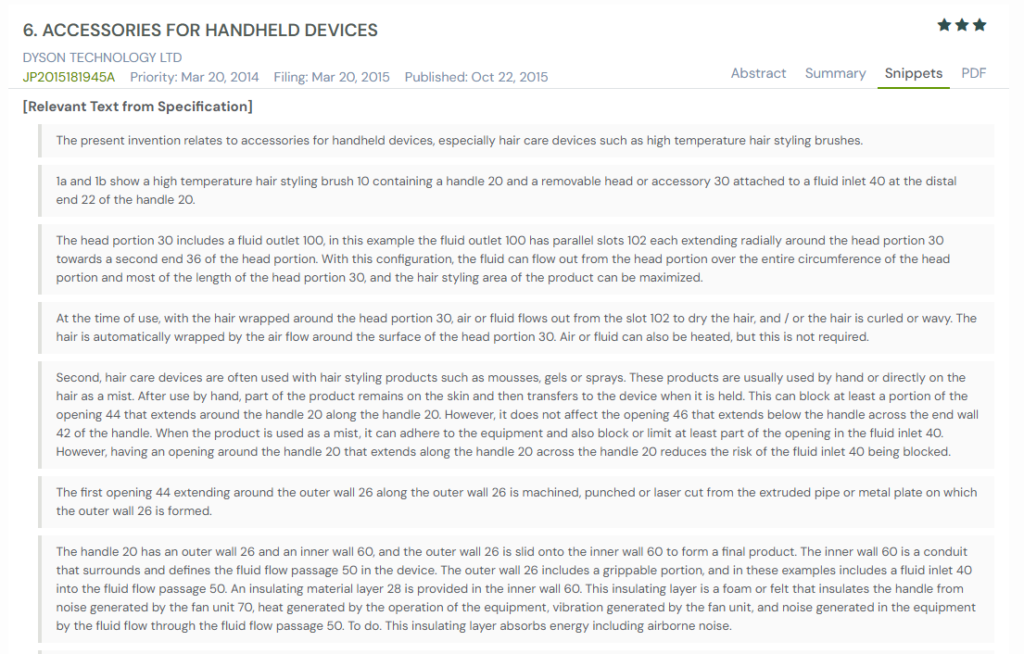
What This Patent Introduces To The Landscape
1. Full-circumference slot-based airflow
Parallel slots run along the length and around the head’s circumference to maximize styling surface area and promote hair wrapping.
2. Overlapping plate structure with spacers
Air is directed through slot openings formed by overlapping plates, with longitudinally spaced spacers ensuring uniform flow and slot thickness.
3. Use of the Coanda effect in styling
The airflow clings to the curved head surface, drawing and wrapping hair automatically for efficient, no-bristle styling.
4. Slot angle customization
Slots may be configured straight or spiraled at various angles to optimize the direction and impact of airflow on the hair.
5. Optional felt-lined noise reduction
Plates can be lined with materials like Kevlar to absorb sound generated by fluid movement within the head chamber.
How It Connects To EP3119235B1
- Both patents use overlapping plates to create tangential airflow slots for wrapping hair during use.
- Each design incorporates slot alignment, angle control, and spacers to stabilize airflow behavior.
- Both focus on noise reduction and airflow smoothing via structural and material enhancements.
Why This Matters
This reference reinforces EP3119235B1’s inventive direction by validating a structural approach to controlled, tangential airflow. Similarly, many styling products, such as lash extensions, also rely on passive structures and design-driven improvements rather than mechanical complexity, highlighting a shared innovation mindset.
It demonstrates how airflow geometry, slot construction, and passive styling mechanisms can collaborate to achieve consistent curling results in a handheld format, an increasingly critical performance benchmark in personal hair styling devices.
#4. TWM292679U
This Taiwanese utility model, TWM292679U, published in 2006, describes an improved air outlet device designed to reduce internal flow resistance and enhance airflow acceleration. Through the use of shaped internal passages and spiral guide vanes, the design increases gas pressure and output force while maintaining a controlled, directional discharge profile.
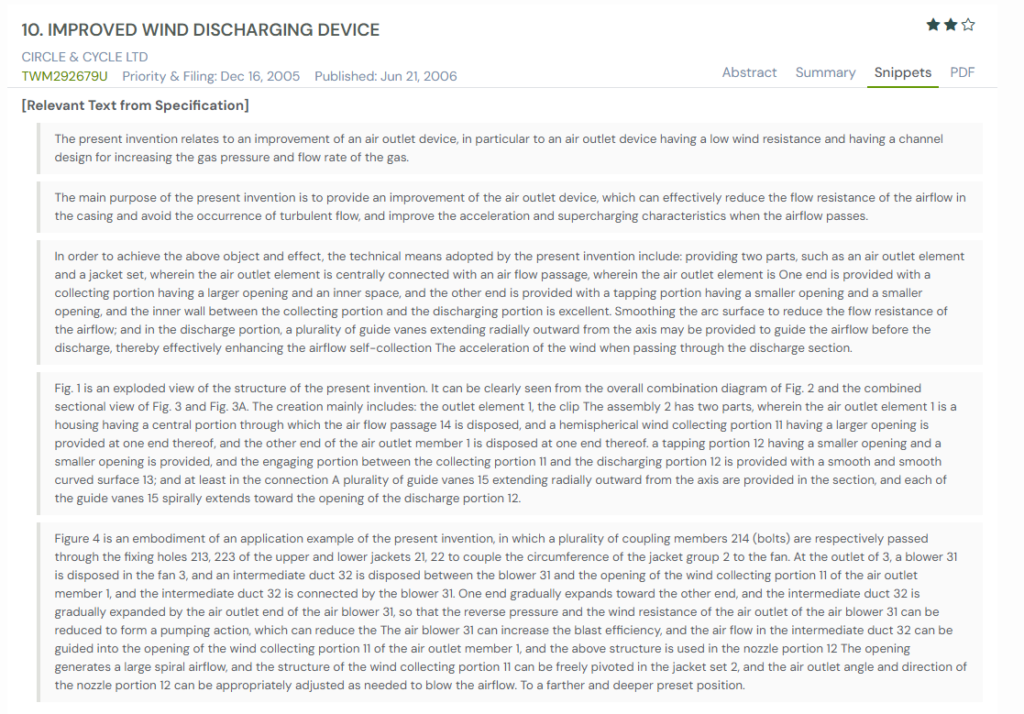
What This Patent Introduces To The Landscape
1. Curved internal outlet surfaces
A smoothed arc-shaped channel reduces turbulence and pressure loss as air transitions from a wide inlet to a narrow outlet.
2. Spiral guide vanes near the outlet
Radial fins guide airflow directionally before discharge, creating a concentrated spiral stream.
3. Two-stage flow control structure
The device consists of a collecting section and a tapping outlet with different diameters to generate internal acceleration.
4. Adjustable nozzle orientation
The wind discharge angle can be pivoted and aimed, allowing airflow to reach deeper or specific target zones.
5. Intermediate expanding duct
A widening mid-section between the blower and outlet boosts airflow speed while minimizing reverse pressure buildup.
How It Connects To EP3119235B1
- Both inventions use curved internal geometries to minimize turbulence and shape airflow for efficient discharge.
- Each design focuses on structural airflow control through the use of narrowed outlets and modular flow redirection.
- Both aim to increase output force and styling precision by engineering the shape and path of airflow within the device.
Why This Matters
Although designed for a different application, this utility model supports the premise of EP3119235B1 that airflow efficiency depends on geometry-driven control. The use of tapered transitions, radial vanes, and directional shaping highlights the value of engineered air movement for consistent, high-performance fluid delivery: principles that are equally vital in hair styling attachments.
How to Find Related Patents Using Global Patent Search

Understanding the broader patent landscape is key when exploring airflow engineering, styling attachments, or fluid dynamic enhancements in handheld appliances. The Global Patent Search tool streamlines this process, helping users discover systems that reflect similar fluid outlet designs, wrapping mechanisms, or noise reduction strategies.
1. Enter the patent number into GPS: Start by entering a patent number like EP3119235B1 into the GPS tool. The platform transforms it into a smart query, which you can refine using terms like tangential airflow, attachment geometry, or styling brush outlet.

2. Explore conceptual snippets: Instead of comparing features claim by claim, GPS now offers curated text snippets. These highlight how other systems manage air direction, fluid flow shaping, or wrap-around performance.
3. Identify related inventions: The tool reveals patents that tackle airflow smoothing, heat distribution, or hair styling control, showing how similar design challenges have been solved across product generations.
4. Compare systems, not legal claims: Rather than focusing on formal legal language, GPS compares how systems behave. This allows users to trace inventive overlaps in function, not just in form.
5. Accelerate cross-category insights: Whether you’re working in personal care device design, airflow control, or product ergonomics, GPS helps uncover inventive ideas across adjacent fields that might otherwise go unnoticed. To get more from your search sessions, here’s a breakdown of the top features available in the AI-powered GPS platform.
With this approach, Global Patent Search gives designers, analysts, and IP professionals a structured, concept-first way to explore related styling and airflow technologies, shaping better strategies for innovation and defense.
Recommended Read: Thread engineering drives innovation across industries, from cosmetic styling tools to biomedical textiles. To know more, please read our blog on EP3835470B.
Disclaimer: The information provided in this article is for informational purposes only and should not be considered legal advice. The related patent references mentioned are preliminary results from the Global Patent Search tool and do not guarantee legal significance. For a comprehensive related patent analysis, we recommend conducting a detailed search using GPS or consulting a patent attorney.

